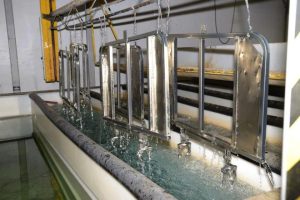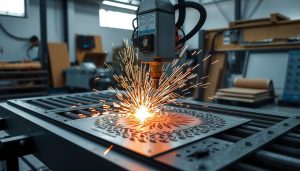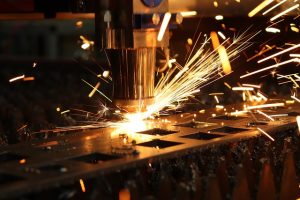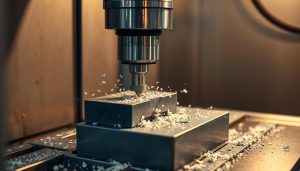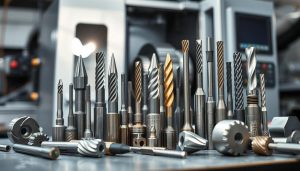In the dynamic world of modern manufacturing, efficiency is the cornerstone of success. The proliferation of CNC (Computer Numerical Control) machining has revolutionized the industry, enabling manufacturers to produce parts with unprecedented speed and precision. However, the true power of CNC technology lies in its ability to accommodate secondary operations, a feat made possible by the integration of live tooling.
Live tooling, a game-changing advancement in CNC machining, has transformed the way manufacturers approach their production processes. By seamlessly integrating additional cutting tools into the CNC machine, live tooling empowers operators to perform a wide range of secondary operations, such as drilling, tapping, and milling, without the need for separate setups. This innovative approach not only streamlines the manufacturing workflow but also enhances part quality, reduces lead times, and boosts overall productivity.
The integration of live tooling into CNC machining has become a critical strategy for manufacturers across a variety of industries, from aerospace and automotive to medical and energy. By unlocking the full potential of their CNC equipment, businesses can capitalize on the enhanced efficiency and cost-effectiveness that live tooling provides, ultimately strengthening their competitive edge in the global marketplace.
What is Live Tooling?
In the world of CNC (Computer Numerical Control) machining, live tooling is a game-changer that unlocks new levels of efficiency and versatility. This innovative technology allows CNC lathes to perform a wide range of secondary operations, such as drilling, tapping, and milling, without the need to reposition the workpiece.
The Concept and Benefits of Live Tooling
At its core, live tooling integrates rotary tools directly into the turret of a CNC lathe. These spindle-powered tooling components are driven by the machine’s main spindle, enabling them to perform complex multi-axis machining operations with exceptional precision and speed. By eliminating the need for lengthy part re-fixturing, live tooling streamlines the manufacturing process, reducing lead times and enhancing productivity.
How Live Tooling Works on CNC Machines
When a CNC lathe is equipped with live tooling, the turret can accommodate a variety of rotary tools in addition to the standard cutting tools. These specialized tools can be programmed to perform secondary operations, such as drilling holes or milling intricate profiles, without the workpiece leaving the machine. This seamless integration of multiple processes on a single CNC platform significantly boosts efficiency and part quality, making live tooling an invaluable asset in modern manufacturing.
“Live tooling is a game-changer in CNC machining, unlocking new levels of efficiency and versatility.”
Types of Secondary Operations Enabled by Live Tooling
Live tooling, a remarkable feature of modern CNC machines, opens up a world of possibilities for complex part production. From expanding the capabilities of traditional drilling, tapping, and boring operations to enabling intricate milling tasks, live tooling is a game-changer for multi-tasking machines.
Drilling, Tapping, and Boring: Expanding Capabilities
With live tooling, CNC lathes can now perform a wide range of secondary operations that were once the domain of separate machines. Drilling, tapping, and boring tasks that were previously challenging or even impossible on traditional CNC lathes can now be executed with precision and efficiency. This versatility allows manufacturers to consolidate multiple operations into a single setup, reducing lead times and boosting productivity.
Milling Operations for Complex Geometries
The true power of live tooling shines through in its ability to handle milling operations for parts with complex geometries. Whether it’s creating intricate profiles, machining off-center features, or producing unique shapes, live tooling equips CNC lathes with the flexibility to tackle these demanding tasks. This capability opens up new possibilities for manufacturers, enabling them to produce parts that were once considered too complex or time-consuming.
Advantages for Non-Circular Parts
Live tooling also excels in the machining of non-circular parts, a common challenge in modern manufacturing. By leveraging the versatility of live tooling, manufacturers can now perform secondary operations on irregular-shaped workpieces with ease. This unlocks new opportunities for creating complex, custom-designed parts that cater to the evolving needs of industries such as aerospace, automotive, and beyond.
| Operation | Traditional CNC Lathe | CNC Lathe with Live Tooling |
|---|---|---|
| Drilling | Limited to on-center holes | Capable of both on-center and off-center drilling |
| Tapping | Challenging to perform | Easily executed with live tooling |
| Milling | Restricted to basic profiles | Able to machine intricate geometries |
| Non-circular Parts | Limited capabilities | Versatile machining options |
Live tooling is a transformative technology that expands the horizons of what CNC lathes can achieve. By unlocking a wide range of secondary operations, manufacturers can now tackle complex part production, off-center machining, and multi-tasking machines with greater efficiency and flexibility.

Applications of Live Tooling in Modern Manufacturing
As a revolutionary technology, live tooling is transforming the world of precision machining. By seamlessly integrating secondary operations into the CNC machining process, live tooling is delivering remarkable improvements in lead time and part quality across a diverse range of industries.
How Live Tooling Improves Lead Time and Part Quality
Live tooling’s ability to perform multiple operations in a single setup reduces the need for part handling and manual intervention. This not only streamlines the manufacturing workflow but also enhances precision, leading to consistently higher-quality parts. Manufacturers leveraging live tooling can significantly reduce cycle times and boost productivity, ultimately delivering products to their customers faster.
Ideal Industries for Live Tooling: Aerospace, Automotive, and More
The versatility of live tooling makes it an invaluable asset in industries that require precision machining and complex geometries. The aerospace and automotive sectors, in particular, have embraced live tooling, harnessing its capabilities to manufacture intricate components with unparalleled accuracy. From aerospace engine components to automotive transmission parts, live tooling is revolutionizing industry-specific applications across the board.
| Industry | Live Tooling Applications | Benefits |
|---|---|---|
| Aerospace | Engine components, landing gear, and structural parts | Improved precision, reduced lead times, and enhanced part quality |
| Automotive | Transmission parts, brake components, and suspension systems | Increased productivity, cost savings, and streamlined manufacturing |
| Medical | Surgical instruments, orthopedic implants, and dental devices | Tighter tolerances, superior surface finishes, and enhanced patient safety |
As the manufacturing landscape continues to evolve, live tooling stands as a powerful enabler of innovative solutions and competitive advantages. By unlocking new possibilities in precision machining, this technology is poised to drive the future of modern manufacturing across a wide array of industries.

How Live Tooling Reduces Costs and Boosts Productivity
The implementation of live tooling in modern manufacturing can have a profound impact on operational efficiency and cost reduction. By combining multiple operations into a single setup, manufacturers can save valuable time and money, streamlining their production processes.
Combining Operations to Save Time and Money
With live tooling, manufacturers can perform a wide range of secondary operations, such as drilling, tapping, and milling, all within the same CNC machine setup. This eliminates the need to transfer parts between different machines or workstations, significantly reducing the time and labor required to complete a job. By consolidating these operations, businesses can enjoy substantial cost savings and improved production throughput.
Minimizing Setup Times and Tool Changes
Live tooling also helps to minimize setup times and the need for frequent tool changes. By reducing the number of machine changeovers and tool exchanges, manufacturers can maintain a more consistent and efficient workflow. This not only improves overall operational efficiency but also contributes to cost savings by reducing downtime and the associated labor and overhead expenses.
FAQ
What is live tooling?
How does live tooling work on CNC machines?
What types of secondary operations are enabled by live tooling?
- Drilling
- Tapping
- Boring
- Milling
These capabilities allow for the production of complex geometries and machining of non-circular parts, which would otherwise require additional setups.
How does live tooling improve lead time and part quality?
In which industries is live tooling most beneficial?
- Aerospace
- Automotive
- Medical device manufacturing
These sectors can leverage the increased versatility and efficiency offered by live tooling to boost productivity and reduce costs.
How does live tooling reduce costs and improve productivity?
- Increased operational efficiency
- Lower labor and material costs
- Higher throughput for manufacturing organizations
